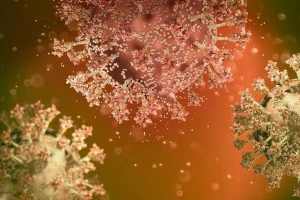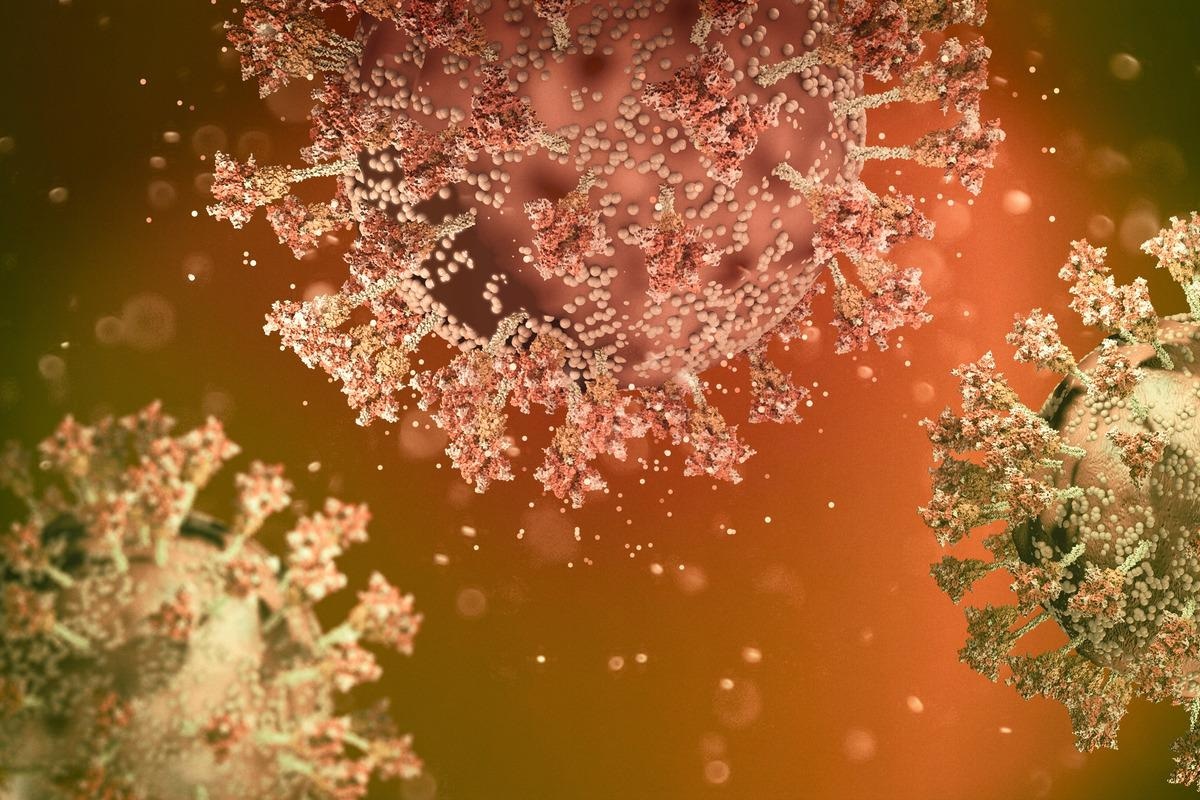The response of four SARS-CoV-2 spike variants to linoleic acid removal

A recent paper posted to the bioRxiv* preprint server depicted the differential allosteric response of the severe acute respiratory syndrome coronavirus 2 (SARS-CoV-2) spike (S) variants to linoleic acid (LA).

Background
The SARS-CoV-2 S glycoprotein, located on the virion surface, promotes host cell viral entry by attaching to the angiotensin-converting enzyme 2 (ACE2) receptor and other receptors, like neuropilin-1. A fatty acid (FA)-binding site in the SARS-CoV-2 S protein, also present in a few other CoVs like SARS-CoV, binds LA and is functionally significant. LA decreases SARS-CoV-2 infectivity by locking the S in a less infectious confirmation when it is occupied.
In their prior work, the present authors demonstrated that the FA site was allosterically coupled with the antigenic epitope or to functional motifs of SARS-CoV-2 for membrane fusion employing dynamical-nonequilibrium molecular dynamics (D-NEMD) simulations. LA removal from FA sites of SARS-CoV-2 causes long-range structural responses in the N-terminal domain (NTD), receptor-binding motif (RBM), furin cleavage site, and fusion peptide (FP)-surrounding areas, according to these simulations.
D-NEMD simulations have also revealed different dynamical and allosteric behaviors between the SARS-CoV-2 original, BriSΔ (a variant bearing an eight amino-acid deletion spanning the S1/S2 cleavage site and furin recognition motif), and D614G variants.
About the study
In the present investigation, the researchers compared the response of the SARS-CoV-2 S variants to the removal of LA using hundreds of dynamical-nonequilibrium molecular dynamics (D-NEMD) simulations. The team compared the dynamical and structural responses of the SARS-CoV-2 Omicron BA.1 (B.1.1.529), Delta Plus (B1.617.2-AY1), Delta (B.1.617.2), and Alpha (B.1.1.7) variants to the original strain S.
The models used in the current work for all the SARS-CoV-2 variants were from D. K. Shoemark et al.'s article and were developed using the cryogenic electron microscopy (cryo-EM) structures of the locked ectodomain of the LA bound S and the NTD of the NOVAVAX structure. These simulations explore how allosteric pathways linking the FA site to the remainder of the protein were affected by deletions, mutations, and insertions.
Multiple configurations retrieved from equilibrium simulations were utilized as starting points for nonequilibrium simulations in the D-NEMD technique, allowing the impact of a perturbation to be investigated. The time-dependent response of the protein to the disturbance was retrieved via directly comparing nonequilibrium and equilibrium trajectories at identical points in time.
Findings and discussions
The study results showed that the SARS-CoV-2 variants vary drastically in their allosteric response to FA-binding. These changes may have functional significance in LA's modulation of viral infectivity. It might also have ramifications for efforts to use repurposed, natural, or explicitly made ligands to address the FA site.
Except for the S71-R78 and RBM, the allosteric linkages in Alpha were quite identical to those in the original S protein. The furin cleavage site, V622-L629, and NTD responses differ significantly between Delta plus and Delta, but not in the RBM. Compared to the original S protein, Omicron, the most infectious variant simulated, showed substantial differences in the responses of the RBM, NTD, V622-L629, and furin cleavage site.
In Omicron, the FA site had a weaker connection with the H146-E156, V622-L629, and S71-R78 regions, but the RBM, the furin cleavage site, and L249-G257 area demonstrated stronger binding to the FA site. A strengthened allosteric linkage was observed between the FA site and the furin cleavage site in Delta plus, Omicron, and Delta compared to the original S, but the link to V622-L629 was weakened. In addition, FPPR had a weaker association with the FA site in all SASR-CoV-2 variants. This suggests that mutations impact how structural rearrangements reach the FPPR.
Conclusions
The study findings demonstrated that the FA site was linked to functional regions of the SARS-CoV-2 S protein, some far away from the site, including the RBM and the NTD, and depicted the allosteric networks involved. When the SARS-CoV-2 original variant S was compared to the four viral variants: Omicron BA.1, Delta plus, Delta, and Alpha, it was clear that the responses of the variants to LA removal varied dramatically.
The authors noted that the allosteric associations to the FA site on the Alpha variant were typically comparable to the protein of the SARS-CoV-2 original strain, except for the RBM and S71-R78 region, which demonstrated a poorer connection to the FA site.
The SARS-CoV-2 Omicron variant, on the other hand, was the significantly impacted viral variant with substantial alterations in the RBM, NTD, the furin cleavage site, and V622-L62. The findings indicated that these differential allosteric modulations might have functional implications, such as variations in virulence and transmissibility. Of note, the researchers stated that it is necessary to conduct an experimental comparison of the effects of LA on various SARS-CoV-2 variants.
*Important notice
bioRxiv publishes preliminary scientific reports that are not peer-reviewed and, therefore, should not be regarded as conclusive, guide clinical practice/health-related behavior, or treated as established information.
Posted in: Medical Science News | Medical Research News | Disease/Infection News
Tags: ACE2, Angiotensin, Angiotensin-Converting Enzyme 2, Cell, Coronavirus, Electron, Electron Microscopy, Enzyme, Glycoprotein, Linoleic Acid, Membrane, Microscopy, Omicron, Protein, Receptor, Respiratory, SARS, SARS-CoV-2, Severe Acute Respiratory, Severe Acute Respiratory Syndrome, Syndrome

Written by
Shanet Susan Alex
Shanet Susan Alex, a medical writer, based in Kerala, India, is a Doctor of Pharmacy graduate from Kerala University of Health Sciences. Her academic background is in clinical pharmacy and research, and she is passionate about medical writing. Shanet has published papers in the International Journal of Medical Science and Current Research (IJMSCR), the International Journal of Pharmacy (IJP), and the International Journal of Medical Science and Applied Research (IJMSAR). Apart from work, she enjoys listening to music and watching movies.
Source: Read Full Article